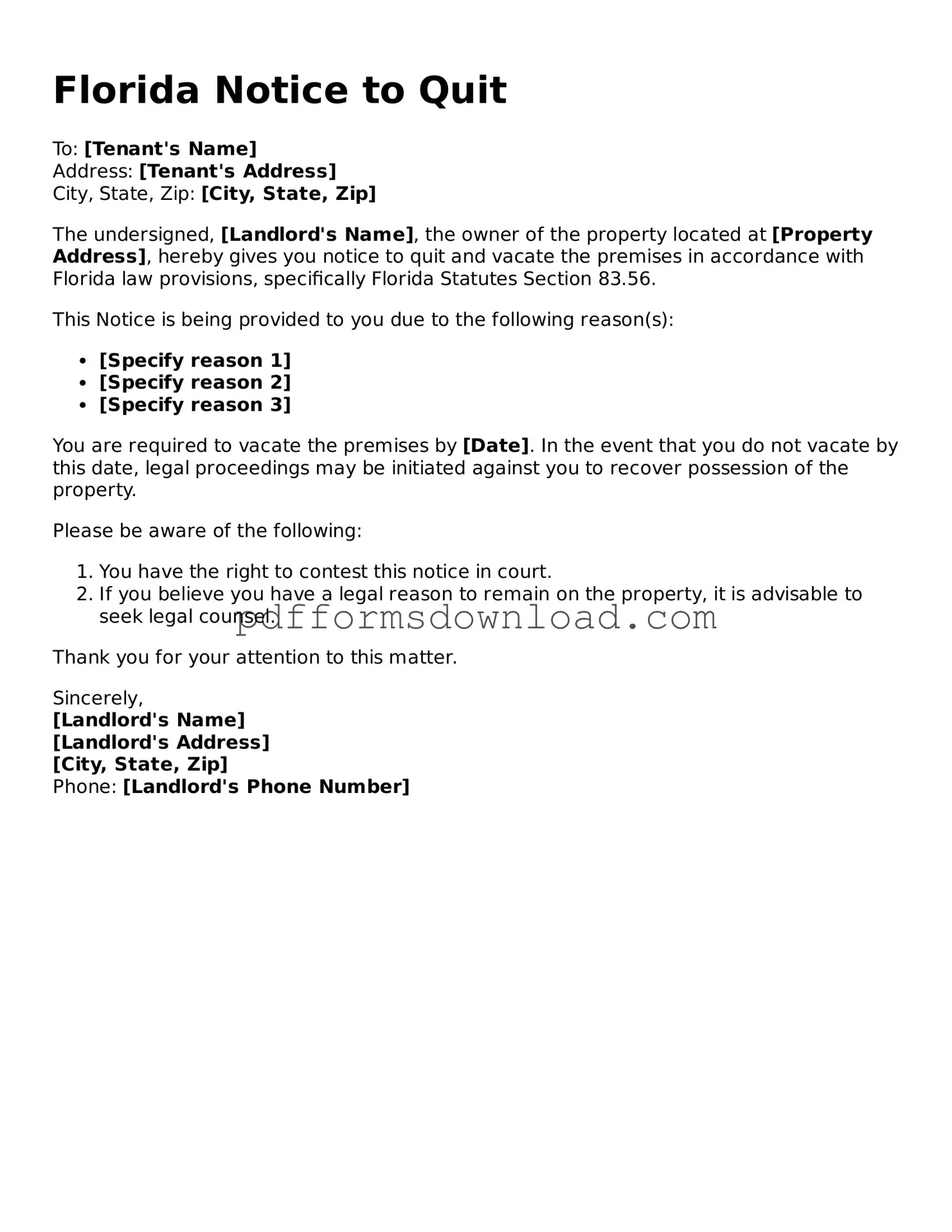What is a Florida Notice to Quit form?
The Florida Notice to Quit form is a legal document used by landlords to formally notify tenants that they must vacate the rental property. This notice is typically issued when a tenant has violated the terms of the lease agreement or has not paid rent. It serves as the first step in the eviction process.
When should a landlord use a Notice to Quit?
A landlord should use a Notice to Quit when a tenant fails to pay rent, violates lease terms, or engages in illegal activities on the property. The notice provides a clear warning that if the issue is not resolved, further legal action may be taken.
How long does a tenant have to respond to a Notice to Quit?
The time frame for a tenant to respond to a Notice to Quit varies based on the reason for the notice. Generally, for non-payment of rent, tenants have three days to pay the overdue amount or vacate the property. For lease violations, the notice period can range from three to fifteen days, depending on the nature of the violation.
Is a Notice to Quit required before filing for eviction?
Yes, in Florida, a Notice to Quit is typically required before a landlord can file for eviction. This notice gives tenants an opportunity to remedy the situation, whether that means paying overdue rent or correcting a lease violation.
Can a tenant contest a Notice to Quit?
Yes, tenants have the right to contest a Notice to Quit. They can argue that the notice was improperly served, that the alleged violations are unfounded, or that they have taken steps to remedy the situation. If the matter escalates to court, both parties will have the opportunity to present their case.
What happens if a tenant ignores the Notice to Quit?
If a tenant ignores the Notice to Quit, the landlord may proceed with the eviction process. This typically involves filing a complaint in court. The court will then schedule a hearing, where the landlord can present evidence of the tenant's lease violations or non-payment.
Can a landlord change the terms of the Notice to Quit?
A landlord cannot change the terms of a Notice to Quit once it has been served. However, they can issue a new notice if they choose to amend the terms or provide additional time for the tenant to comply.
What information must be included in a Notice to Quit?
A Notice to Quit must include the tenant's name, the address of the rental property, the reason for the notice, and the time frame for compliance. It should also be signed and dated by the landlord or their representative.
Are there specific forms required for a Notice to Quit in Florida?
While there is no official state form for a Notice to Quit, it is important that the notice includes all necessary information and complies with Florida law. Landlords can create their own notice or use templates available online, but it should be customized to fit the specific situation.
